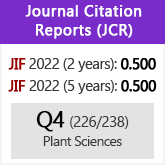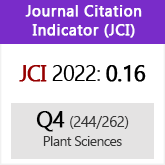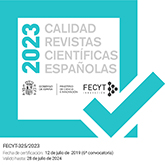On the presence of Cneorum (Cneoraceae) in Cuba: an example of biogeographic disjunction between the Mediterranean and the Caribbean?
DOI:
https://doi.org/10.3989/ajbm.2197Keywords:
Cneorum tricoccon, Cneorum trimerum, Schoepfia stenophylla, misidentifications, Cuba, Mediterranean Region, CneoraceaeAbstract
The main goal of the study was to shed light on the enigmatic world distribution of the Cneoraceae family, frequently, and until very recently, used as an example of the connection between the Mediterranean and the Caribbean floras. Specifically, we wanted to document the presence/absence of an endemic taxon, first collected in 1861 by Charles Wright from Cuba (Cneorum trimerum). During the last five years, we have visited all the localities where this taxon was originally collected, at Sierra Maestra in eastern Cuba, and revised all available herbarium material. Moreover, we checked all botanical and historical references, and also interviewed local people, to whom we showed pictures of the Mediterranean Cneorum. The conclusions of our survey are the following: i) nowadays, there are no Cneorum plants growing in their type localities in Cuba; ii) all the collected material from Cuba and deposited in herbaria by Wright, and also others studied by Carlquist, correspond unequivocally to C. tricoccon. The material collected by Ekman in 1922, and identified as C. trimerum, is sterile, and cannot be identified with certainty, however we think it is unlikely to be C. tricoccon; iii) this plant was probably introduced during the mid 19th century from Southern France, although it never become naturalized. The presence of French colonist settlements in coffee plantations in those areas where Cneorum was collected, together with the fact that the plant has medicinal properties, lead us to suggest that the colonist themselves were those introducing the plant in Cuba. Lastly, iv) Schoepfia stenophylla (Olacaceae) has also been recently misidentified as Cneorum tricoccon due to the resemblance of their leaves. Schoepfia stenophylla is an endemic species currently threatened and for which there is an in situ conservation plan. Such confusion between these species has contributed to the maintenance and spreading of the mistakes through the long taxonomic history of the presence of Cneorum in Cuba. Hence, we conclude that Cneorum can no longer be used as an example of biogeographical disjunction between the floras of the Mediterranean and the Caribbean.
Downloads
References
Borhidi, A. 1991-1996. Phytogeography and Vegetation Ecology of Cuba. Akademiai Klado-Budapest. 858-923.
Bramwell, D. & Bramwell, Z. 1990. Flores silvestres de las Islas Canarias. (3.ª edición). Editorial Rueda. Madrid, 376 pp.
Brull, G., Severeco, J., & Labrada, L. 2002. Reproducción y distribución de Cneorum trimerum Drod. Planta endémica local monotípica del Parque Nacional Turquino. Flora y Fauna 6: 21-22.
Carlquist, S. 1988. Wood anatomy of Cneoraceae: ecology, relationships, and generic definition. Aliso 12: 7-16.
Caris, P., Smets, E., de Coster, K. & Ronse de Craene, L.P. 2006. Floral ontogeny of Cneorum tricoccon L. (Rutaceae). Plant Systematics and Evolution 257: 223-232. doi:10.1007/s00606-005-0373-x
Chase, M.W., Morton, C.M. & Kallunki, J.A. 1999. Phylogenetic relationships of Rutaceae: a cladistic analysis of the subfamilies using evidence from rbcL and atpB sequence variation. American Journal of Botany 86: 1191-1199. doi:10.2307/2656983 PMid:10449399
Chodat, R. 1921. Sur un nouveau Cneorum. Le Cneorum trimerum (Urb.) Chod. Bulletin de la Societé Botanique du Genève, ser. 2, 12: 23-24.
Erdtman, G. 1953. Pollen morphology and plant taxonomy. Angiosperms. Almqvist and Wiksell, Stockholm. 539 pp.
Font Quer, P. 1992. Plantas Medicinales. El Dioscórides Renovado. 13.ª edición. Editorial Labor, S. A. Barcelona. 425-426.
González, A.G., Fraga, B.M. & Torres, R. 1974. Chromones from Cneorum-tricoccum. Anales de Química 70: 91-93.
González, A.G., Darain, V., Estévez, E. & Vivas, J.M. 1983. Estudio químico terapéutico de las cromonas de las Cneoráceas. Planta Médica 47: 56-58.
Granda, M.M. 1985. Reporte sobre la introducción de plantas medicinales exóticas III. Phytolacca americana y Cneorum tricoccon L. Revista de Plantas Medicinales 5: 53-61.
Groppo, M., Pirani, J.R., Salatino, M.L.F., Blanco, S.R. & Kallunki, J.A. 2008. Phylogeny of Rutaceae based on two noncoding regions from cpDNA. American Journal of Botany 95: 985-1005. doi:10.3732/ajb.2007313
Heimsch, C. 1942. Comparative anatomy of the secondary xylem in the Gruinales and Terebinthales of wettstein with reference to taxonomic grouping. Lilloa 8: 83-197.
Howard, R.A. 1988. Charles Wright in Cuba, 1856-1867. Chadwick-Healy, Alexandra. 1 vol. 90 pp. + microfiches.
León, Hno. & Alain, Hno. 1951. Flora de Cuba, Vol. II. Contr. Ocas. Museo de Hist. Natural del Colegio de La Salle Num.10. 456 pp.
Lobreau-Callen, D., Nilsson, S., Albers, F. & Straka, H. 1978. Les Cneoraceae (Rutales): ètude taxonomique, palynologique et systématique. Grana 17: 125-139
Lobreau-Callen, D. & Jérémie, J. 1986. ¿Espèce Cneorum tricoccon (Cneoraceae, Rutales) représentèe à Cuba? Grana 25: 155-158.
Maguinness, O.D. 1936. Relict species of Bas-Languedoc. Journal of Ecology 24: 361-371. doi:10.2307/2256431
Mondon, A., Trautman, D. & Oelbermanny, V. & al. 1983. Constituents of Cneoraceae. 9. Pentanortriterpenes of the b-series and c-series, olefins. 2. Liebigs Annalen der Chemie 10: 1798-1806. doi:10.1002/jlac.198319831012
Raven, P.H. & Axelrold, D.I. 1974. Angiosperm biogeography and past continental movements. Annals of the Missouri Botanical Garden 61: 539-673. doi:10.2307/2395021
Riera, N., Traveset, A. & García, O. 2002. Breakage of mutualisms by exotic species: the case of Cneorum tricoccon L. in the Balearic Islands (Western Mediterranean Sea). Journal of Biogeography 29: 713-719. doi:10.1046/j.1365-2699.2002.00719.x
Roig, J.T. & Mesa, J. 1988. Diccionario botánico de nombres vulgares cubanos, Vols. I y II. Editorial Científico-Técnica, La Habana. 3.ª ed. y 3.ª reimpresión. 1142 pp.
Seifriz, W. 1943. The plant life of Cuba. Ecological Monographs 13: 375-426. doi:10.2307/1948590
Traveset, A. 1995a. Reproductive ecology of Cneorum tricoccon L. (Cneoraceae) in the Balearic Islands. Botanical Journal of the Linnean Society 117: 221-232.
Traveset. A. 1995b. Seed dispersal of Cneorum tricoccon by lizards and mammals in the Balearic Archipelago. Acta Oecologica 16: 171-178.
Underwood, L.M. 1905. A Summary of Charles Wright’s exploration in Cuba. Bulletin of the Torrey Botanical Club 32: 291-300. doi:10.2307/2478811
Urban, I. 1918. Über zwei Euphorbiaceae-Gattungen. 60. 501-503 y Mit Tafel XVI en Berichte der Deutschen Botanischen. Gesellschaft. Bd. XXXVI.
Urban, I. 1923-1928. Plantae cubenses novae vel rariores a clo. Er. L. Ekman lectae. II. Symb. Antill. 9: 177.
Valido, A. 1999. Ecología de la dispersión de semillas por los lagartos endémicos canarios (g. Gallotia, Lacertidae). Ph.D. Thesis. Universidad de La Laguna, Tenerife, Is. Canarias.
Van Tieghem, M.P.H. 1899. Sur les Cnéoracées. Ann. Sci. Nat. Bot. Séries. 8, 9: 363-369.
Downloads
Published
How to Cite
Issue
Section
License
Copyright (c) 2009 Consejo Superior de Investigaciones Científicas (CSIC)

This work is licensed under a Creative Commons Attribution 4.0 International License.
© CSIC. Manuscripts published in both the printed and online versions of this Journal are the property of Consejo Superior de Investigaciones Científicas, and quoting this source is a requirement for any partial or full reproduction.All contents of this electronic edition, except where otherwise noted, are distributed under a “Creative Commons Attribution 4.0 International” (CC BY 4.0) License. You may read here the basic information and the legal text of the license. The indication of the CC BY 4.0 License must be expressly stated in this way when necessary.
Self-archiving in repositories, personal webpages or similar, of any version other than the published by the Editor, is not allowed.

















